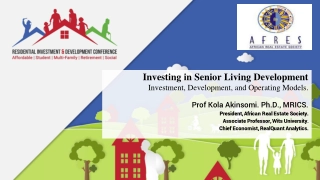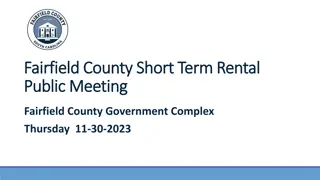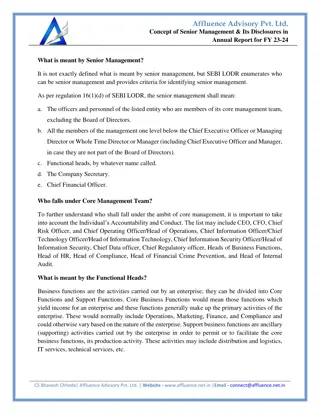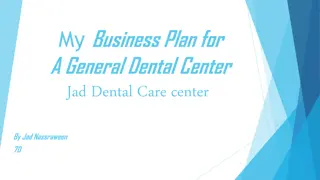
Philanthropy in the U.S.: Insights and Trends
Explore the landscape of philanthropy in the U.S., covering topics from giving statistics to the impact of income on donations. Gain insights into the factors influencing charitable giving and the evolving nature of philanthropy.
Download Presentation

Please find below an Image/Link to download the presentation.
The content on the website is provided AS IS for your information and personal use only. It may not be sold, licensed, or shared on other websites without obtaining consent from the author. If you encounter any issues during the download, it is possible that the publisher has removed the file from their server.
You are allowed to download the files provided on this website for personal or commercial use, subject to the condition that they are used lawfully. All files are the property of their respective owners.
The content on the website is provided AS IS for your information and personal use only. It may not be sold, licensed, or shared on other websites without obtaining consent from the author.
E N D
Presentation Transcript
Fairfield Senior Center- Philanthropy in the U.S. OCTOBER 13, 2015
Topics Covered During the Next Six Weeks Week 1 (Today) Week 2 Week 3 Week 4 The State of Giving in the U.S. Why People Give Giving in the U.S. versus Philanthropy Overseas Government Spending and Charitable Giving (Crowding Out or Crowding In) Week 5 Corruption in the Nonprofit Sector Nonprofit Malfeasance Week 6 The New Philanthropy and the Principal-Agent Problem
To Get Copy of Slides Go to: www.faculty.fairfield.edu/mleclair Click on link that says Fairfield Senior Center
Week 1 Giving in the U.S. U.S. by far the most generous country in terms of giving per capita Reflection of both higher income and tradition of philanthropy Protestant ethic of taking care of neighbor(s) Giving was up close and personal Also, as will be argued in a later presentation, much of what was once philanthropy is now in the public sector in other developed nations
Historical Statistics Total Giving by Source and as a Percentage of Total Giving, U.S., 1990-2012, Billions of Dollars Year Religion Percent Education Percent Hum. Services Percent Health Percent 2006 94.63 31.96 40.07 13.53 30.74 10.38 24.22 8.18 2007 97.79 31.44 42.69 13.72 31.45 10.11 25.28 8.13 2008 98.22 32.78 35.89 11.98 35.44 11.83 24.14 8.06 2009 99.56 36.29 34.96 12.74 35.95 13.10 26.08 9.51 2010 97.54 33.29 37.32 12.74 38.25 13.06 26.64 9.09 2011 101.78 33.32 38.62 12.64 38.91 12.74 26.80 8.77 2012 101.54 32.11 41.33 13.07 40.40 12.74 28.12 8.89
Who are the Most Generous? Individual Giving, Average and in Proportion to Income, 2011 Income (range) Income (average) Donations (average) Donations/Income Less than $70,000 $31,842 $1,054 0.033 $70,000-79,999 $74,742 $2,019 0.027 $80,000-99,999 $89,108 $2,099 0.024 $100,000-119,000 $108,549 $2,179 0.020 $120,000-149,999 $133,318 $3,242 0.024 $150,000 and Over $247,261 $6,059 0.025 Source: Bureau of Labor Statistics, Consumer Expenditure Survey
Generosity does not Rise with Income, at least in terms of Proportion Donated Contradicts a lot of what we think we know As a result of big, wealthy donors that create a lot of noise when they give Also surprising, given that large donors are the only ones that can truly benefit from the tax breaks associated with giving People with lower incomes generally are better off taking the standard deduction
Current Statistics 2014 Charitable Giving by Source: Individual giving, $258.51 billion, increased 5.7 percent in current dollars over 2013. Foundation giving, $53.97 billion, was 8.2 percent higher than 2013 Bequest giving, $28.13 billion, increased 15.5 percent 2013 Corporate giving, $17.77 billion, increased 13.7 percent over 2013 giving Source: Giving USA
Numbers Reflect a General Trend Foundation and bequest giving is rising at a faster pace than individual giving Represents rapid accumulation of wealth May influence overall patterns of giving in the future For now, individual giving dominates
Where does money go? Religion $114.90 billion, 2014 giving increased 2.5 percent higher Education giving increased to $54.62 billion, 4.9 higher Human Services $42.10 billion total was 3.6 percent higher Health $30.37 billion 2014 estimate was 5.5 percent higher than the prior year Arts/Culture/Humanities $17.23 billion, growth of 9.2
Others Environment/Animals The $10.50 billion estimate for 2014 was up 7.0 percent Public-Society Benefit the $26.29 billion estimate for 2014 increased 5.1 percent International Affairs -- $15.10 billion estimate for 2014 decreased 2.0 percent, in current dollars, from 2013. The drop was 3.6 percent when adjusted for inflation.
What about corporate giving? Why do businesses give? Provides a company with an enlightened image Particularly businesses that may not be viewed favorably by the public Petroleum business, tobacco, etc. Improves work satisfaction among employees Retention may improve Firms may donate to causes that help train needed labor Interest of a top executive might also be a driver
Result-Business Giving Looks Very Different from Personal Giving Largest Participants 1. Novartis Patient Assistance Foundation, Inc. (NJ) $452,981,816 12/31/2013 2. Wells Fargo Foundation (CA) 186,775,875 12/31/2013 3. The Wal-Mart Foundation, Inc. (AR) 182,859,236 01/31/2013 4. The Bank of America Charitable Foundation, Inc. 160,479,886 12/31/2013 5. The JPMorgan Chase Foundation (NY) 115,516,001 12/31/2012 6. GE Foundation (CT) 124,512,065 12/31/2013 7. The Coca-Cola Foundation, Inc. (GA) 98,175,501 12/31/2013 8. Citi Foundation (NY) 78,372,150 12/31/2013
Direction of giving for Corporate Programs Main Destinations were: Education (29%) Health (25%) Community Investment (15%)
Mechanism of Giving Corporate Foundations (34%) Direct Giving (49%) In-Kind (17%) Last category a reflection of drug companies that donate medicines to poorer Americans and to overseas initiatives
Tax Treatment and Total Giving Tax Incentives are a significant driver of giving for those in the upper-income brackets Less, however, than many people assume The standard deduction for a couple filing jointly in now in the range of $12,500. Outside of high-tax, high-property price, Connecticut, you may not reach that by itemizing Tax breaks not a consideration when giving
In much of Europe Tax breaks are available only for specific donations (as in Italy) Another reflection of the subsidiary role played by the charitable sector as opposed to government social spending Discussion is brought up periodically in the U.S. (removal of tax breaks)
Corporate Deduction 5% of Income Provides some incentive to give, but the prime motivator is still need to demonstrate enlightened nature of business This deduction was opposed by many when instituted, given the motives and nature of corporate giving
Uniqueness of U.S. Situation also Reflected in the Mechanisms of Giving Charity Aggregators (United Way) Giving through the workplace (and matching programs) More recent phenomena: Crowdfunding Social Pressure Websites (Hungersite.com) Giving through investing (Impact Investment)






















